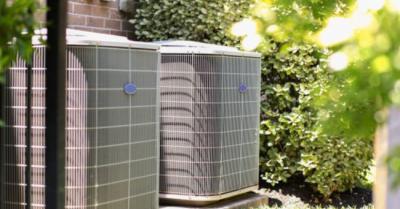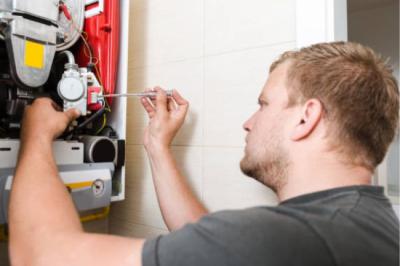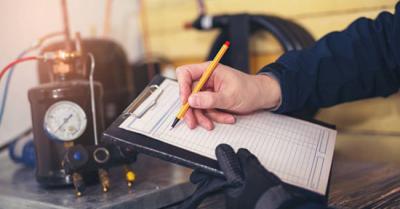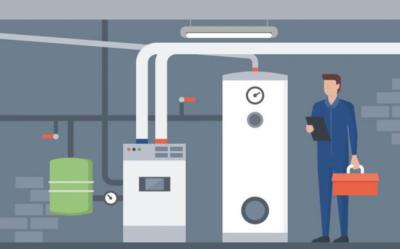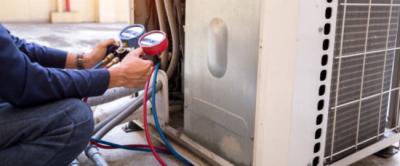
What Are The Steps In Installing An HVAC System?
In the field of home comfort, a few aspects can be considered essentials, including a properly working HVAC (Heating, ventilation, air conditioning) system. First, the upgrade might be of an existing system or not, depending on whether you are installing a new one from scratch. Before deciding whether to upgrade, they involved several vital steps that could always be considered for a successful operation. Ferrying you through each phase of HVAC installation Service in Wayne, this all-inclusive guide will make your home fabled for comfortable temperatures and healthy air.
Steps by Step Guide For HVAC Installation
Let's discuss these 08 most important steps that play a vital role in HVAC installation in Wayne:
Step1. Calculate The Load
The load capacity calculation is considered the most important in setting up an HVAC system. This refers to decisions concerning your heating and cooling loads. Competency in operations and maintenance issues may not have a significant role; factors such as:
-
The proper sizing for an area,
-
Quality of insulation chosen,
-
The number and type of windows selected, among others, play critical roles in this calculation.
A load calculation will ensure that you select the correct HVAC size for your building, preventing wastage and ensuring optimal efficiency.
Step2. Find A Suitable Location For The Fan Coil Unit
After calculating how much load the fan coil unit must handle, it is time to identify the ideal location for such a unit. This Wayne's Heating and Air Conditioning unit has a cooler and dehumidifier cuildocker (evaporator coil). Pick a central position capable of mutually distributing air well throughout your house. Ensure accessibility with ease for maintenance and how close the unit is to outdoor condenser necessities.
Step 3. Cut The Return Air Opening
Later, installing a return air opening is necessary. This opening permits the air to go back into the HVAC system to be conditioned. Make sure you measure your return air opening accurately and size it according to your system specifications. Optimal performance will be achieved through proper sizing and position.
Step 4. Construct A Simple Platform
The fan coil unit should be lifted to enable proper run-off and not create water damage. Creating a primary platform creates the appropriate elevation and stability necessary. It is essential to apply durable materials and see that the platform for HVAC systems is perfectly flat, offering a stable base.
Step 5. Attach Supply Plenum Ring
The supply plenum ring is an important system that links the fan coil unit to ductwork systems. Proper attachment ensures that conditioned air can enter the ducts more smoothly. Fasten the supply plenum ring securely onto the fan coil unit, providing the manufacturer’s recommended protocol, and make all air-tight connections.
Step 6. Connect The Condensate Drain
Condensation, a natural consequence of cooling down anything, means that at least a fair amount of unnecessary moisture must be cleaned through an effective condensate drain. Pull out a suitable length of broad gauge copper pipe, connect it in some way to the back door we have made with an offset joint, and then fix it down all along, as mentioned earlier; it is essential for proper drainage from the condensate drain. Cleaning the drain pan and pipe is a crucial step to avoid water damage as well as keep your HVAC system operating efficiently.
Step 7. Connect Refrigerant Lines
The refrigerant lines are part of the cooling process, as the heat collected inside your home is dumped outside by the condenser units. Let the two ends of the refrigerant lines meet carefully, and anticipate a secure and leak-free joint. It is also important to insulate these lines properly so as not to gain energy and to keep the system efficient.
Step 8. Connect Supply Tubing And Plenum Duct
Now that everything internally can grapple chops, it’s time to plug in the supply tubing and plenum duct. Conditioned air is distributed throughout your home through the supply tubing, ensuring a well-balanced flow through the plenum duct. These components need to be securely attached into place. If they do not seal properly, this is quite a severe problem as it may lead to energy wastage and lower the efficiency of your HVAC system.
Can you explain how an HVAC system works?
A coil, an integral heat exchanger component, channels air through the cooling unit. There are two main types of heat exchangers: shell and tube and cross-flow coil. The refrigerant in the exchanger removes the heat from the sucked-in air, leaving just the cooled air to be reintroduced into the space.
What must one do to create an HVAC system?
Heat loss and gain calculations, equipment selection, and duct run design are the three main components of an HVAC system. The Air Conditioning Contractors of America (ACCA) provides a technical handbook that covers each HVAC system design stage.
Conclusion
To conclude, installing an HVAC system in Waynes requires adopting the plan undertaken through several consequential and carefully designed steps. Each stage, from figuring out the load to mounting crucial units, contributes to the total effectiveness and productivity of the system. Complying with these tips guarantees the most straightforward procedure of putting things together and transforms your home into a domain infused equally with comfort, adequacy, and optimal air quality. Remember to ask for professional advice, obey local building rules and follow the manufacturer's recommendations for your HVAC system to ensure the installation project will be completed satisfactorily.
We have used them for many years. They are the best in town.
- Michele Tetro Conlin
